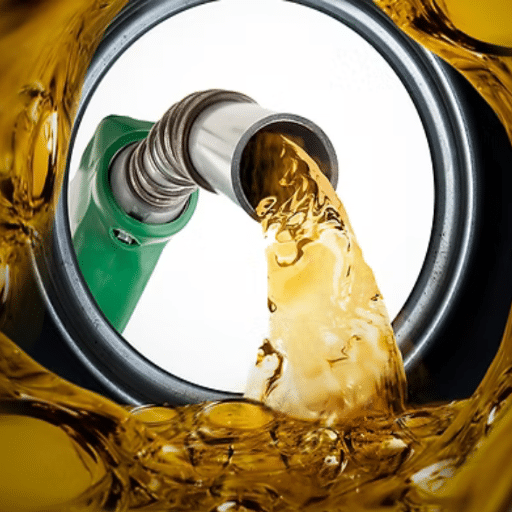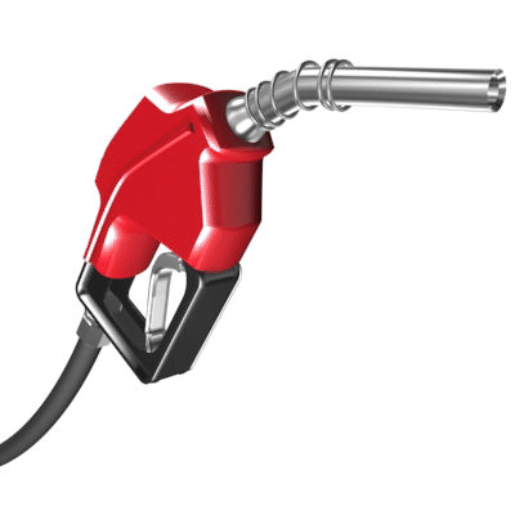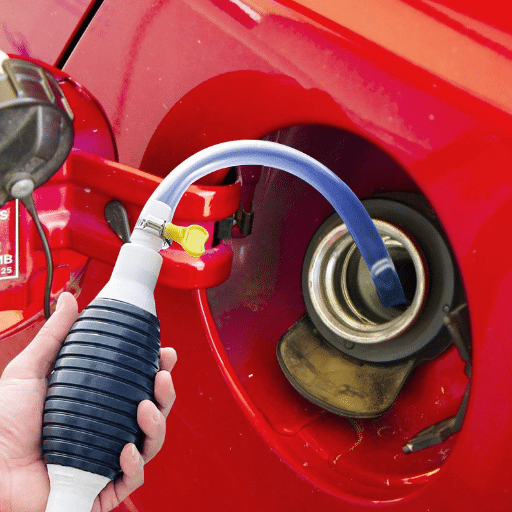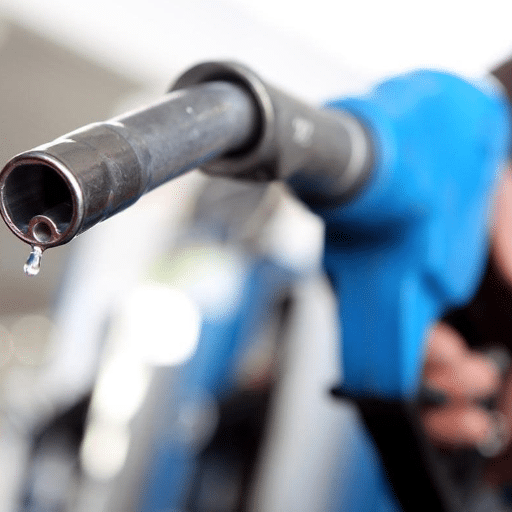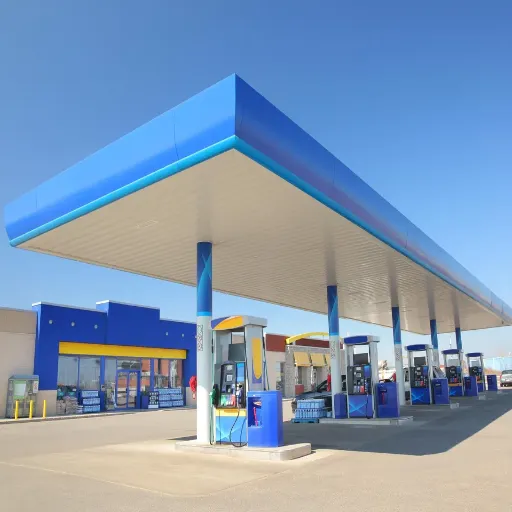Understanding gas price and the considerations behind the profit that gets made entails peeling back the layers of complexity, explaining how fuel prices are fixed and are affected by companies strategizing their operational construction for profitability. Gas prices are dictated by a greater or lesser fine equilibrium of global market forces in an importunate ambiance, with supply-chain intricacies, regulatory intercessions, or consumerism intermingling. This article will elaborate on the main factors that allow the final price that you view at the pump to come to be, elucidate the methods by which fuel companies operate in balancing costs against profit, and unravel the greater economic force that underpins the industry. From the conclusion of the discussion, you shall possess a very nuanced view of why gas prices configure and maintain their perspective by engendering companies’ strategy in a sustainable manner.
What is Profit Margin in the Gasoline Industry?
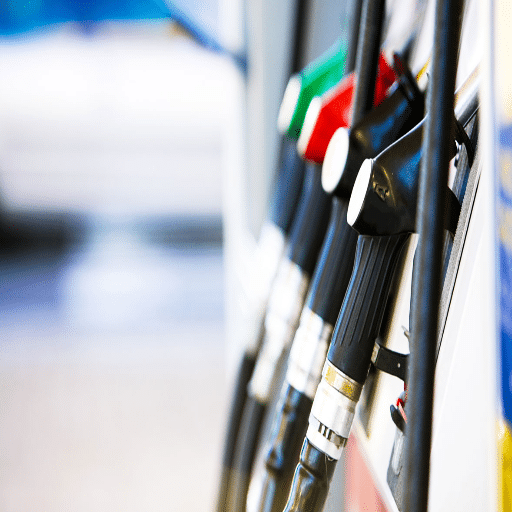
Selling gasoline is a Hindi term for profit, which is the difference between the money received from the sales and the costs incurred to produce it: raw material, refinement, transportation, and distribution. This profit margin is usually given as a percentage of revenue to signify the amount of profit that goes with each dollar of sales. Crude oil price fluctuation, operating cost and expenses, refinery capacity, transportation convenience or inconveniences, and demand, amongst others, are some of the factors that determine the profit margin. By the interplay of these and other factors, profit margins may differ greatly, in addition to regional price variations and differing regulatory requirements.
Defining Profit Margin
Profit margin is a crucial financial metric, with the other side focusing on how much money is actually shared between the company and the workers from their revenues. It is specified as a percentage of a number and is calculated as net income divided by total revenue. If a company generates $1,000,000 in revenues and earns 100,000 in net profit, the profit margin would be 10%. The statistic is very useful when measuring the efficacy of any company and the ability to keep costs down while generating revenue.
If you look at average profit margins, different industries will display different average profit margin levels because of their cost structures and business models. An example is: technology companies are said to be able to realize profit margins of 20% or higher, given their scalability and low overhead costs in recent times. Retail and food-service industries, on the other hand, due away with rather low profit margin levels of 2%-5% on the higher side, mainly because of higher fixed costs, pricing strategies, and raw material price fluctuations. These numbers tell you how important the context is when scrutinizing the profit margin of any given company, because a healthy margin can vary from one sector to another.
The Importance of Profit Margin for Gasoline Companies
Being a very important financial metric for gas companies that directly reflects the operational ability of sustaining themselves and enhances competitiveness in a somewhat volatile market. The gas industry works in a very capital-intensive environment, comprising the cost of exploration, extraction, refining, transportation, and distribution. Higher profit margins mean having the ability to invest in infrastructure, remain compliant with regulations, and absorb commodity price shocks.
The major determinants that impact the profit margins include international price trends for oil and gas, geopolitical stability, production efficiency, and technical changes. On the upstream side, it is in all interests that the costs of production be lowered by efficient exploration and drilling, thus enlarging the profit margin. On the other hand, downstream activities, i.e., refining and marketing, usually operate at rather thin margins due to high competition and regulated prices of fuel in many regions.
Environmental policies and shifts to renewables represent significant external forces with pressure that tends to weigh on traditional gas companies, thereby forcing adaptation or innovation on their part to survive. Hence, keeping a close watch on profit margins while striving to optimize them is a must if you want them to grow steadily over the long term and shave off attendant risks whose basis lies in market and regulatory changes.
Factors Influencing Profit Margin on Gasoline
Crude Oil Prices
Fluctuations in the barrel price of crude oil around the world affect the gas profit margin. In 2023, price fluctuations ranged from $70 to $95 per barrel, largely due to geopolitical tensions and production policies enacted by OPEC+. Since crude oil is the primary input in producing gasoline, any surge in its price directly cuts down on the profit margins for the gas companies, except when the retail prices are also raised.
Market Demand and Seasonal Variations
Seasonal trends normally determine the gasoline demand, with customers consuming more during the summer due to high travel. Latest data show that in summer 2023, the U. S. gasoline demand averaged nearly 9.2 million barrels per day, up by 2% from the previous quarter. This kind of surge in demand can temporarily increase profit margins, whereas sustainable profits will highly depend on proper management of the supply chain.
Environmental Regulations and Costs
Environmental and emission policies set to price things such as carbon do lead to increasing operational costs and thus act as disadvantages for gas producers. For instance, new European regulation initiatives under “Fit for 55” have aimed to reduce emissions of greenhouse gases by 55% by 2030, thereby seriously diminishing the gas producers’ profitability in the region with increasing costs due to compliance.
Supply Chain Disruptions
Reduction in production efficiencies and availability that help in narrowing profit margins takes place in any logistic disruption, refining capacity challenge, or natural disaster. For example, refinery outages in the Gulf Coast due to hurricanes caused a reduction in the supply of gasoline temporarily and local price spikes.
The Global Shift Towards Renewable Energy
The adoption of renewable energy solutions is placing a long-term downward pressure on the demand for gas derived from fossil fuels. Government agencies across the world grant subsidies and incentives to EV adopters. The latest estimates put global sales of electric vehicles well past 10 million in 2022-a concrete indication of departing from gasoline.
Currency Exchange Rates
Fluctuations in currency exchange rates can, for companies with international operations, turn up import-export costs between the purchase of crude oil and the sale of refined gas. For example, a weak rupee hurts gas distributors’ profitability in foreign markets in importing crude oil that is priced in dollars.
Key Takeaway: These factors, together with an increasingly competitive global market, therefore, attest to the urgency with which gas companies must adopt smart strategies and innovative solutions to protect their margins through fast-paced challenges.
The Role of Oil Prices in Gas Profit Margin
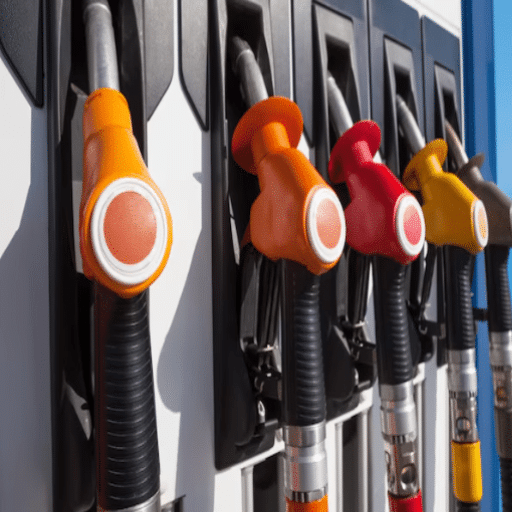
Oil prices affect gas profit margins through their direct implications on the cost of production and operations. When oil prices increase, a gas company would generally incur higher operational expenses in procuring crude oil and converting it into refined products, thus squeezing profit margins unless such increased costs are passed on to consumers. Conversely, a decline in oil prices may also make for a lowering of operational costs, which could possibly be worked on to enlarge profit margins should prices for consumers be reduced in response. However, price changes cannot always be passed on in their entirety, owing largely to intense competition from the markets, as well as regulations imposed from time to time, and companies must, therefore, actively weigh pricing strategies to safeguard their profits.
How Oil Prices Affect Retail Gas Prices
Fluctuation in crude oil prices is one of the greatest determining factors for retail gasoline prices, which accounts for about 50-60% of the final price at the gas station. An increase in the crude oil price meant an increase in the base price of gasoline, with refiners facing greater acquisition costs of raw materials. For example, during the recent years of spiking crude prices, the skyrocketing of above $120 per barrel in mid-2022 saw gasoline prices averaging above $5 per gallon in many parts of the United States.
Transportation and refinement operating expenses enhance the contagion of price oscillations of crude oil onto that of gasoline. Refineries are consumers of energy, be it from oil or natural gas, the prices of which undergo modifications; fluctuations in the prices of these primary ingredients affect refinery operations. Give another example: In addition to pipeline fees or shipping charges, an increase in oil transportation costs is, in turn, fed back into higher prices for end-users. These are all factors that accentuate price disparities in regions where infrastructure limitations or natural disasters obstruct the normally smooth functioning of supply chains.
Today, market forces of taxation and seasonal demand variation also interplay with oil prices in the setting of retail prices. With taxes levied at different levels, be it federal or state, the prices shall have a fixed averaging charge per gallon added, while those seasonal trends, such as the switch to summer-grade fuel, mandated for emission reduction purposes, may temporarily raise production and dispatching costs. For example, data shows that summer gasoline prices generally go up by 5 to 15 cents per gallon from their winter rates.
Retail gas prices, thus, are directly affected not just by the global crude valuation indicators Brent and WTI. Other variables are at play in the form of situations such as refining capacity, regulatory requirements, and local demand patterns. With an understanding of these factors, one begins to appreciate just how complicated the supply chain is, with changes at the oil price stage cascading through layers until they hit consumers at the actual gas station.
Historical Trends in Oil Prices and Their Impact
Oil prices, throughout the years, have been subject to a great deal of volatility under the combined influence of events of geopolitical nature, economic cycles, or changes in supply and demand. As prices soared against all records during the embargo of the 1970s, supply was being withheld by some calculating producers. Similarly, there was an all-time price of $147 a barrel in 2008 as enhanced demand from emerging markets was priced in by speculative markets and geopolitical uncertainties.
Oil prices have also had developments due to COVID-19. In 2020, they collapsed to record lows, with WTI crude even trading below zero dollars per barrel for a short period due to excess supply and meager demand during global lockdowns. But prices shot up once again during 2021 and 2022, as supply chain issues and a surge in demand for energy worked together. In this backdrop, Brent crude went above $100 per barrel in the first quarter of 2022 due to tension and conflict in Eastern Europe, thereby cementing the fact that geopolitical uncertainty spills directly over into daily price changes.
OPEC+ decisions seem, in fact, to have a major role in either maintaining stability or causing instability in prices. Their cuts to production in 2020, followed by gradual increases, were deliberate attempts at manipulating market volatility. Past evidence has always shown oil price movements to respond substantially to changes in production policy, inventory levels, and external triggers like natural disasters or sanctions, sending waves across the global economy. One of the key things for anybody interested in energy markets is thus an understanding of these trends.
Global Events Influencing Oil Prices
The geological-emerging conflicts and instabilities in the pure checkpoint of oil price volatility since they affect supply chains and production. For instance, since the Ukraine conflict remains ongoing, the global oil markets have been disrupted on an unprecedented level, especially with sanctions being laid against Russian energy exports. It is said in industry analyses data that Russia used to be one of the prime oil exporters, with perhaps 10% of total crude output globally, facing lower than 20% export in early 2023. Reduction in supply then tended to push prices up, especially in markets in Europe that were heavily dependent on Russian oil supplies.
OPEC Production Strategies
The Organization of Petroleum Exporting Countries (OPEC) continues to have the largest influence on oil price setting through coordinated production adjustments. Ever since the sharp production cuts during COVID-19, OPEC has been increasing production little by little and closely watching demand. For example, fearing the slowing global economy and downward slide in prices in 2023, OPEC announced a cut of over 1 million barrels per day. That goes to show that the strategic importance of OPEC’s decisions in setting price trends remains high, as almost even the tiniest adjustments to production measures greatly affect supply and price at the international level.
Economic Trends and Currency Dynamics
Some macroeconomic factors-including central bank policies and currency fluctuations-provide stimuli in determining oil prices. A strengthening US dollar makes the oil trade in that currency expensive for countries having weaker currencies. Accordingly, this mechanism reduces demand, thereby influencing price changes. Besides, the recessionary tendencies feared in major economies, namely the United States and the Eurozone, throughout 2023 have cast a pall of doubt over the forecasts of oil prices, with market reports suggesting that average crude oil prices may remain below $80 per barrel for most of the year.
Energy Transition and Alternative Fuels
Instituting measures for decarbonization- being the new instance of being-would be secondary considerations for fluctuations in oil price. With a clean-energized incentive regime being offered worldwide, long-term demand for fossil fuels is falling. For instance, the adoption of EVs increases with sales projected to cross 15 million units worldwide in 2023, lessening the demand for gasoline and diesel. Although this is basically an ongoing process, the impact is now evident in the oil markets, altering long-run price trends.
Weather and Natural Disasters
Disruptions in oil production and distribution are caused by extreme weather events and natural disasters. For instance, hurricanes and tropical storms in the Gulf of Mexico have affected extraction and refining activities as a result of temporary supply shortages and price increases. The latest forecasts indicate a likely above-average hurricane season for 2023; hence, there are concerns regarding the possible production disruptions to regional facilities, thus represent nearly 15% of gross crude output in the US.
Important Note: These multifarious forces explain the very complexity of oil price dynamics, negotiated through a complex mix of geopolitical, economic, technological, and environmental factors. An understanding of these dynamics is essential for stakeholders in various industries, including energy producers, consumers, and policymakers, as they move through the shifting international energy landscape.
Calculating Profit Margin on Gasoline

There are some basic steps to be followed to determine the gasoline profit margin:
- Determine Selling Price: Determine the price at which the gas is sold to customers per unit (e.g., per gallon or liter).
- Identify Cost Price: Determine the full cost of the gas to produce, refine, and distribute it, which includes raw materials, labor, transportation, and overheads, on a per-unit basis.
- Subtract Cost from Selling Price: Find the profit per unit, using the formula below:
- Calculate Profit Margin in Percentage: Divide the profit by the selling price and multiply the result by 100 to express profit margin as a percentage:
This is a simple approach that provides an exact measure of the margin and must be applied in determining the financial performance of gas sales.
Understanding Cost Structures in Gasoline Sales
The cost structures in gas sales lie under the influence of several important components reflecting the interplay of various factors, both from market dynamics and operational inputs:
- Raw Material Costs: Procuring crude oil or natural gas accounts for the largest expense, with prices fluctuating owing to the demand and supply, geopolitical tensions, and OPEC production considerations.
- Refining and Processing Costs: The transformation of crude oil into gasoline and other derivatives carries with it the cost of technically advanced refining as well as energy-intensive processes.
- Distribution and Transportation Costs: Fuel transportation includes logistical costs, which vary according to the different nature of transportation, distances involved, and fuel prices.
- Marketing and Retail Overheads: Final costs also include promotional expenses, operating overheads of gas stations, and employees’ wages.
- Taxes and Regulatory Compliance: Different countries impose different excise duties, environmental compliance fees, and other taxes that can vary significantly from region to region and directly affect end-user prices.
With an understanding of these cost components, businesses can identify potential areas for efficiency and then price accordingly. By improving their cost calculation, gas retailers can guarantee a competitive margin of profit even while adjusting for market volatility.
Steps to Calculate Profit Margin
- Revenue Determination: Calculate the revenue earned during a specific period. This will include any income generated from gas sales, plus charges for additional services or products sold at the retail outlet.
- Identify Total Costs: This includes fixed costs, for example, rent, salaries, and insurance, and variable costs such as cost of goods sold, transportation costs, regulatory fees, and taxes.
- Calculate Gross Profit by subtracting COGS from revenue.
- Subtract Operating Expenses: Deduct expenses like salaries, utilities, marketing, administrative, and compliance costs from the calculated gross profit to arrive at operating profit.
- Calculate Net Profit: Deduct any non-operating expenses, such as interest or taxes, from the operating profit to arrive at net profit.
- Analyze and Adjust: Regularly analyze the calculated profit margins and benchmark them against industry standards. Adjust pricing strategies, operational practices, or supplier agreements as needed to maintain profitability and competitive levels of pricing in the market.
By following the procedural steps, businesses would precisely assess their level of profitability and operational efficiency through data-based decisions.
Case Study: Profit Margins of Major Gasoline Retailers
Industry-wide grams bring in a variety of factors affecting profitability from the elements of market demand, supply chain logistics, regulatory conditions, and fluctuating cost of crude oil. As per an analysis by top sources:
- Profit Margin Breakdown: On average, gas stations run very thin margins, ranging roughly from 1.4% to 3% net. Most of their sales come from fuel; therefore, depending heavily on other sales, likewise non-fuel offerings for profit would be convenience store items and washes.
- Cost Implications/And Price Demarcation: The retail gasoline price is composed mainly of crude oil price, taxes, refinery costs, and distribution costs. The Malaysian marketers, however, are themselves left with very little jurisdiction over these variables, which must have led to the razor-thin margins offered by fuel sold at retail!
- Revenue Diversification: Famous gas retailers steer the money profits into higher revenues through diversification. As eating materials for snacks, soft drinks, and other convenience goods can carry higher profit margins than fuel, sometimes more than 30%.
- Competitive Landscape: Gasoline retailers usually operate under high competition in pricing in high traffic areas, thus margins get further squeezed. On the other hand, having loyalty programs and outlets with different services, product bundle options, and inventory optimization can drastically uplift financial performance.
Findings from this explain that while fuel sales constitute the core activities of gas retailers, strategic diversification and operational efficiency are crucial for the promotion and sustenance of profitability in view of fluctuating external costs.
Challenges Facing Gasoline Retailers
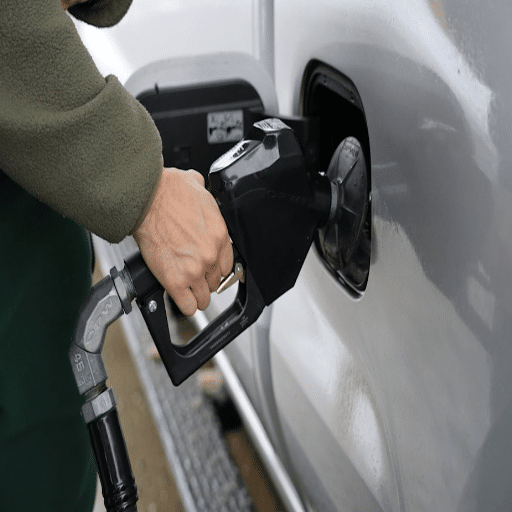
Regulatory Compliance
The issue of compliance with stringent environmental regulations and safety standards poses challenges to the gas retail industry, sometimes within the utmost extraordinary limits. These conditions demand infrastructural renovation and upkeep of various types to avoid penalties. Businesses face additional operating and capital expenses when they have to conform to standards relating to fuel quality, emissions control, and storage safety.
Price Volatility
According to various factors, fuel price shows an alteration in magnitude. These include shifts in the global oil market, geopolitical events, and changing patterns in demand. The volatility the fuel prices can completely wipe out the profit margins of a retail gas business and negate attempts at establishing short- and long-term pricing strategies in financial matters.
Consumer Preferences
Shifting consumer preferences toward electric vehicles (EVs) and alternative energy sources are reshaping the market. Gas retailers must strategize to adapt by integrating EV charging stations or diversifying product offerings to tap into this emerging demand for sustainable energy solutions. Failure to do so could result in a market share erosion over time.
Operating Costs and Their Effect on Profit Margin
Operating costs are perhaps among the most important factors affecting profitability in the retail gas business. These costs involve labor, rent, utilities, costs related to supply chain and logistics, maintenance, and compliance with regulations. Increases in these costs, such as those arising out of inflation, the raising of minimum wages, carbon emission fees, and so on, will directly bear upon profit margins, pushing them down.
It has recently come to be known that between 60% and 70% of the revenues a fuel retailer earns are dedicated to paying for wholesale fuel. Adding to the difficulty of budgeting and forecasting financial performance are frequent fluctuations brought about by increasing volatility in crude oil prices. On top of that, utility bills for the fuel station, lighting, and refrigeration are gradually creeping upwards due to increasing energy prices.
Integration of EV charging stations remains an increasing concern due to the initial investments they require. Installing a single Level 3 charging station can cost from $30,000 to $80,000, with maintenance and operational costs accruing annually. While such investments characterize long-term sustainability goals, they levy high upfront costs, which smaller retailers may not bank on for profit.
In response to increasing operating costs, some retailers have adopted energy-efficient technologies such as LED lighting or are implementing IoT-based projects to improve supply chain logistics. Others use digital payments, loyalty programs, or any number of innovations to improve operational efficiency and customer retention. Managing these costs, while still being competitive on pricing, remains a key balance that must be struck to stay profitable in the changing energy market.
Competition and Pricing Strategies in the Retail Gasoline Market
Energy prices rise and fall; consumer demand changes; multiple entities strive for their share. Just so, fierce competition ensues in the retail gasoline trade. A dynamic pricing method constitutes one of the mechanisms, wherein fuel prices are set on a near real-time basis, according to the prices of crude oil, supply-demand relation in a region, and transportation costs. Global crude oil output has been susceptible to volatility for quite some time now; at present time costs are said to fluctuate between $80 and $90 a barrel, therefore directly affects retail gas prices at the pump.
Second in line is regionalism in price-setting. Regions that have a higher state tax or lighting standards raise the gas price over probably fewer constraints being put in place in these regions. For many times in the past, California has at times boasted some of the highest gas prices in the United States due to the State’s strict emissions standards, commonly registering $1.20 or more above the national average in some periods.
Planning to stay ahead means retailers have to invest increasingly in loyalty programs that reward customers with fuel discounts upon purchase. The introduction of digital platforms in support of these loyalty programs has indeed been very efficient; some reports suggest a rise in customer retention by as much as 25%. Another revenue-generating avenue is the bundling of fuel sales with convenience store offerings or services.
Processor metas are utilizing technology-given edge to get an upper hand over competition: automated artificial intelligence analytics predict market tendencies to optimally configure procurement strategies. These technologies enable the securing of supply contracts at lower prices when the market prediction forecasts price hikes, thus giving them a competitive advantage.
Efficient pricing strategies in the retail gasoline markets must involve an intricate balance between cost management, consumer-oriented initiatives, and the agility to shift with external elements affecting the markets. The use of contemporary technology and innovative customer-oriented approaches keeps altering the competitive scenario.
Regulatory Factors Impacting Profit Margins
When regulatory frameworks are applied to the retail gas industry, they tend to shape profit margins and set restrictions on operating parameters, compliance costs, and pricing strategies. Whenever environmental standards are enforced, they demand that companies invest in cleaner energy technologies and infrastructure upgrades. To exemplify, emissions regulations promulgated in regions such as California under the aegis of the LCFS occasioned such increases in compliance costs that companies must now either integrate renewable fuel blends in their fuel inventory or purchase credits to offset carbon emissions from these fuels to be compliant.
In addition, price caps and anti-gouging laws, which intend to protect consumers from exploitation during shortages in supply, limit the ability of the gas retailer to respond to the volatility of prices. EIA data suggests that profit margins for gasoline distributors shrink tremendously during price freeze periods imposed by regulatory agencies, coupled with high crude oil costs, especially during emergency periods such as hurricanes or geopolitical tensions.
Taxation policies alone are capable of greatly cutting into profit margins. Federal and state excise taxes on gasoline, depurated on location, can range from 18.4 cents to over 60 cents per gallon. According to the API, the average state excise tax on gasoline as of 2023 is 31.67 cents per gallon, with some states adding further fees and general sales taxes.
Finally, the really complicated permitting and zoning considerations for new gas stations add to the costs of operations. Restrictions on station density, setback distances, and land use are translated into an increase in initial capital costs and offer operational restrictions at least in an operational sense; those barriers have their highest impact in an urban setting, given the already high cost of real estate. By grappling with these regulatory hurdles through strategic planning and complying efficiently, companies can better contain the potential erosion of their profit margins while still remaining competitive.
Future Outlook for Profit Margins in the Gasoline Industry
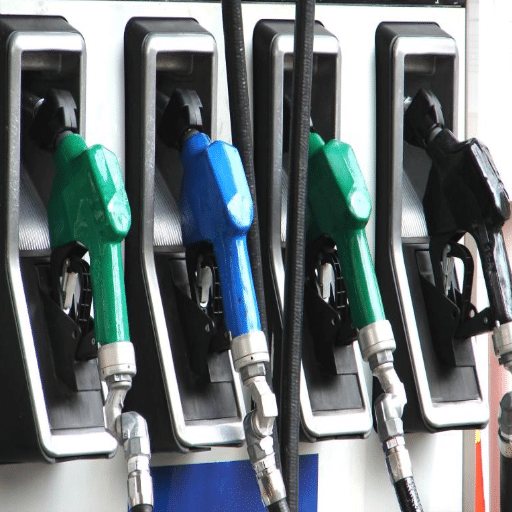
The various key factors building profit margins for the gas industry will be the regulatory trends, market demand, and advancements in technology. Higher environmental restrictions could give rise to increased compliance costs, thereby constraining profit margins, while the clearer conscience of clean energy drives that demand would generate innovation and diversification of operations. Moreover, embracing advanced automation and data-aided management tools could improve their operational efficiency of companies, in turn, instrumental in the offset of rising costs. It is around this strategic bedrock that companies stand to sustain profit margins: sustainability and cost control, plus adaptation to changes in consumer and policy environments.
Predicted Trends for Gasoline Prices
There is an expectation of turmoil in gasoline pricing as crude oil pricing fluctuates worldwide, geopolitical tensions prevail, and the energy transition remains afoot. According to analysts, price increases in the short term may owe much to constrained oil supply occasioned by production cuts from most exporter countries as demand picks up; this is in tandem with rebalancing of the economies post-COVID-19 era. However, in reference to the bigger picture, stabilization or slow decline is projected as the adoption of renewable energy systems fastens, and the anti-fossil fuel movement becomes stronger by the day. The promotion of technologies supporting electric vehicles and alternative fuels is likely promotion that may, in turn, create pressure on the demand for gasoline with potential for moderating price levels over time. There will surely still exist regional price variations caused by special characteristics of regional infrastructure, taxes, and degrees of transport costs that weigh upon them, even with all these changes.
Innovations and Their Potential Impact on Profitability
The technological and process integration can profoundly affect profitability across industries. In my opinion, technological advances such as automation, AI, and energy-efficient technologies can reduce operational costs, resulting in increased productivity and output quality. For instance, through machine learning algorithms, firms can forecast the demand more accurately, either reducing waste or enhancing supply chain management operations. They can also invest in renewable energy technologies to reduce energy costs in the long term and position their brands in tandem with the end consumers who increasingly prefer to buy products with eco-friendly brand images, which enhances revenue opportunities.
Long-term Sustainability of Profit Margins in Gasoline Sales
The long-term sustainability of profit margins in gasoline sales, among other things, is determined by the market force, regulatory framework, and technological advancement. Primarily, the profit margin for gasoline hangs upon the ebb and flow of crude oil prices; price volatility thus is often hedged against by means of incipient measures or diversification into other energy markets.
Secondly, more severe regulations are affecting demand for traditional gasoline, such as the setting of emission caps or the imposition of renewable energy targets. Corporations must be responsive to these changes by investing in and adapting technologies for cleaner fuels, intermixed with the use of biofuels or alternative energies, to meet the standards, whilst still standing in favor of the environmentalists.
Third, technological innovations include data analytics and smart logistics systems: functionalities necessary for optimization of distribution networks while minimizing operational inefficiencies. Forward-thinking companies are increasingly using predictive analytics to manage and reduce inventories while maintaining a higher customer satisfaction level.
Therefore, in a transforming energy landscape, the strategic mix of cost management, managing regulatory issues, adopting technology, and diversification into renewable energy solutions will have to maintain competitive profit margins.
Reference Sources
2. The Profitability of Electricity, Oil, and Gas Utilities in America
3. Why Do Gasoline Prices React to Things That Have Not Happened?
Frequently Asked Questions (FAQs)
What is the profit margin on gas for oil companies?
Gas profit margins gently sway according to prevailing market conditions, production costs, and efficiencies of operation. Generally speaking, major oil companies like Chevron and Shell intend to work at a margin to cover their expenses while making a worthwhile return for their investors and staying competitive in the market.
How does the price of the market affect the profit margin on gas?
Market prices are the profit margin on gasoline. As crude oil prices go up, prices of gasoline also rise with them, remunerating refiners with larger profit margins. But if prices fluctuate or drop significantly, companies will be forced into cross-hedging in their refining operations, thus affecting their profitability.
Factors that lead to a loss in the profit margin of gas include:
I’m sure you will feel satisfied knowing that grub loss on gas is attributable to various factors like an increase in operation costs, asset depreciation, or sudden supply and demand shifts. Minor external disturbances such as COVID-19 can also reduce fuel consumption, thereby driving down profit margins.
In what way does regulation affect the profit margin on gasoline?
Domestic regulations heavily affect margins on the sale of gas. Environmental regulations and taxation can be used to increase operational costs to the oil companies, thereby increasing gas prices to the consumers. Such increased costs, in turn, reduce refinery profit margins.
What measures do refiners work on to have a profit margin centrality on gas?
Such refiners try to maintain their profit margins through supply-chain optimizations, investments in improving efficiency via technology, and proper inventory management. Besides that, they may set the prices with respect to market changes so that they remain profitable even when conditions are unfavorable.
How does the tank size affect the profit margin on gasoline?
Larger tanks, by providing economies of scale, generally lower per-unit storage costs; such efficiencies enable an oil company to maintain or even increase profit margins on fluctuating market prices.
How does Chevron’s profit margin on gas compare to its competitors?
Profit margins on gas and the discrepancy in them between companies can be found by analyzing financial reports and performance metrics. Several factors, such as operational efficiency, market strategy, and global supply chain management, distinguish Chevron’s margin from those of Shell and other refiners.
What is typically considered standard by investors when dealing with percent profit margin on gas?
The percent profit margin on gas can vary, but a margin of about 5-15 percent is generally considered a benchmark by investors. Knowledge of these margins is of utmost importance for investors trying to gauge the financial standing and profitability of oil companies operating in the gas market.

